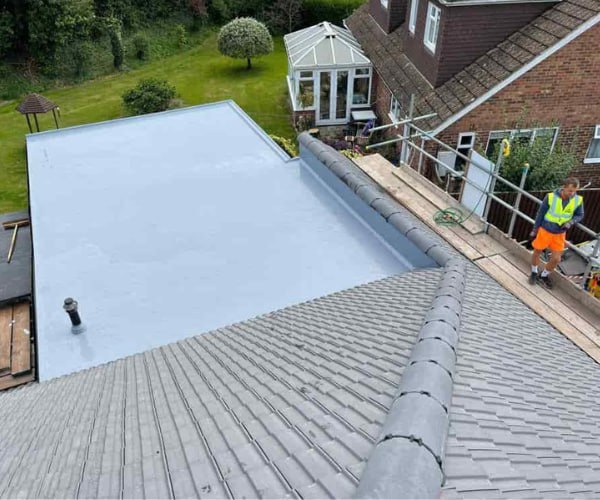Fascia and Soffit Repairs: When Is It Time to Upgrade?
Fascia and soffits are essential components of your roofline, helping to protect your home from the elements, and contributing to its overall aesthetic appeal. However, like any other part of your home, fascia and soffits can become worn out over time. If you’re noticing issues with these vital elements, it might be time to consider upgrading or repairing them. In this article, we’ll explore when fascia and soffit repairs are necessary, and how to tell if an upgrade is needed to ensure the longevity and health of your home.
What Are Fascia and Soffits?
Before diving into when to repair or replace fascia and soffits, it’s important to understand what they are and how they work.
- Fascia is the long, horizontal board that runs along the edge of the roof, supporting the bottom row of tiles or shingles. It is also where the gutters are attached.
- Soffit is the material that covers the underside of the eaves, allowing for ventilation in the attic space. Soffits are often perforated or vented to promote airflow and prevent moisture build-up in the attic.
Together, fascia and soffits play a key role in protecting your roof, attic, and home from water damage, pests, and other potential issues.
Common Signs That Your Fascia and Soffits Need Attention
Like most roofing components, fascia and soffits are exposed to the elements, meaning they can deteriorate over time. Below are some of the most common signs that your fascia and soffits may need repairing or upgrading:
1. Visible Rot or Cracking
If you notice that your fascia boards have begun to rot or crack, it’s a clear sign of water damage. Prolonged exposure to moisture, often from overflowing gutters or leaks, can lead to this deterioration. If left untreated, rot can spread and compromise the structural integrity of your roofline.
2. Sagging Fascia
A sagging fascia board is often a sign of a deeper problem, such as water pooling in the gutters or damage from pests. A sagging fascia not only looks unappealing but can also indicate that the board is no longer providing the necessary support for your roofline.
3. Peeling or Flaking Paint
If your fascia and soffits are painted, peeling or flaking paint is a good indicator that the wood is exposed to the elements and may be deteriorating. While this could be a cosmetic issue, it’s often a sign that water is seeping into the wood, causing the paint to peel away.
4. Pest Infestations
Damaged or decaying fascia and soffits can attract pests such as birds, squirrels, or insects looking for a place to nest. If you find signs of nesting, droppings, or even visible holes in your fascia or soffits, it’s time to call in the professionals to assess the damage.
5. Mould or Mildew Growth
If you notice the growth of mould or mildew on your fascia or soffits, this could indicate a moisture problem. Moisture that has seeped into the fascia and soffits can promote fungal growth, which may not only compromise the materials but also affect the overall health of your home.
When Should You Consider Upgrading Fascia and Soffits?
While repairs can solve many issues, there are situations where upgrading your fascia and soffits may be the best solution. Here are some key factors that suggest an upgrade is in order:
1. Aging Materials
If your fascia and soffits are made of wood and have been in place for many years, it may be time to consider upgrading to a more durable material. Wood is susceptible to rot, and while repairs can often be made, wood fascia and soffits require more maintenance over time. Materials such as uPVC or aluminium offer better durability and are resistant to rot, moisture, and pests, making them a great long-term solution.
2. Frequent Repairs
If you find yourself repairing fascia and soffits regularly, it could be a sign that the materials have reached the end of their lifespan. Upgrading to more durable, low-maintenance materials can save you money and time in the long run, preventing the need for ongoing repairs.
3. Improved Energy Efficiency
In some cases, replacing old fascia and soffits can improve your home’s energy efficiency. Upgrading to materials with better insulating properties, such as uPVC, can help keep your attic space well-ventilated and temperature-controlled. This can reduce your overall energy bills and prevent moisture issues that lead to more serious problems.
4. Enhancing Curb Appeal
If you’re looking to improve the aesthetics of your home, upgrading your fascia and soffits can have a significant impact. New, clean, and modern fascia and soffits can dramatically improve the appearance of your roofline, increasing the overall curb appeal of your home. This is particularly beneficial if you’re preparing your property for sale.
Conclusion
Fascia and soffits may not always be the first elements of your home that come to mind when considering maintenance, but they are crucial to the protection of your roof, attic, and overall home. If you notice signs of damage or deterioration, it’s important to address the issue promptly to avoid further problems. Whether you need a simple repair or an entire upgrade to more durable materials, professional help can ensure the longevity and reliability of your roofline.
If you’re unsure whether your fascia and soffits need repair or replacement, contact DSC Roofing Rushden today. Our expert team will assess the condition of your roofline and offer the best solution to ensure your home is protected for years to come.
Call us on: 01933 823 229
Click here to find out more about DSC Roofing Rushden
Click here to complete our contact form and see how we can help with your roofing needs.

